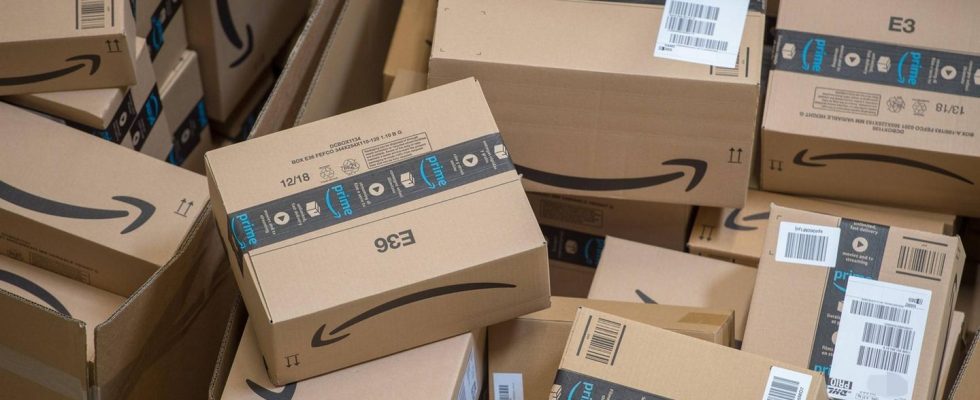Damage in the billions
How criminal gangs exploit Amazon’s lax returns policy
It’s true: Amazon sells pallets full of returns. However, these are not surprise bags full of gifts.
© Amazon
Returning online purchases has never been easier. Thank Amazon and Co. But that could change: Criminal gangs have perfected fraudulent returns – and offer them as a service.
Every online shopper has probably sent something back: whether the jeans didn’t fit or the cable wasn’t the right one after all. You may also order several sizes at the same time – thanks to the relaxed return processes After all, Amazon and Co. almost invite you to take advantage of them for your own benefit. But some criminals go even further: they systematically exploit online retailers through bribery and fraud.
The scam is actually very simple: Instead of actually returning products, empty packages are sent back, the packages are filled with other contents or simply reported as lost. It’s not just professional gangsters who do this: under keywords like “Refund Method” or “r3fund” there are lots of instructions on simple return fraud on Tiktok. But the organized gangs go one step further: To ensure that everything runs smoothly, they also bribe warehouse workers, parcel delivery men and other parts of the supply chain. And: You can also simply book this criminal network as a service.
Advertising with the Amazon scam
“CNBC” is currently showing this in a major investigation. Accordingly, the gangs advertise their “services” on Tiktok, Telegram and sites like Reddit. The promise: Anyone who turns to the criminals will no longer pay for the purchase – just a fee for processing the return. Then you officially register your return, pass on the data and the fee to the gang – and you’ve picked up a “free” iPhone. The advantage for the fraudsters is obvious: they don’t have to find buyers for the fraudulent goods, they just work on behalf of the fraudsters. And: Instead of having to receive goods themselves, they can stay in the background and still collect.
A lawsuit filed by Amazon in December shows how big the gangs are: The retailer accuses 48 people around the globe of systematically exploiting and deliberately manipulating the retail giant’s returns policy as part of the “Rekk” group. For this they would have collected fees of 30 percent of the value of the goods. According to the dealer, it is an “illegal business”. The fraudsters “exploited the returns process for their own financial gain, at the expense of honest customers and retailers.” It’s about millions of dollars in damage.
Small effort, big money
The case of Noah P., also named in the lawsuit, shows how the illegal business actually works. He worked in one of Amazon’s warehouses in Chattanooga, Tennessee, until he was arrested at his place of work in May last year. P. later admitted that he had marked several packages as returned – without the goods actually arriving back at Amazon. According to the police report, he received $3,500 for it. What P. didn’t know himself: The money came from Rekk. The goods he falsely marked as received were valued at over $60,000.
Page wasn’t the only one on the fraudsters’ payroll. He had two other employees in the area, his contact told the group in chat messages that the police have. “You can do 30 scans per shift, sometimes more,” it says. “So at least 12,000 a week.” Another employee of the same department store was later named by Amazon in the lawsuit as an additional accomplice, allegedly causing $100,000 in damages with over 76 fraudulent orders.
From Amazon to Volkswagen
These are the most popular employers among non-academics
Customers expect easy returns from online retailers
The fact that Amazon – and numerous other retailers – are susceptible to fraud to this extent is partly self-inflicted. Over the years, smooth returns have become one of the biggest advantages of online retail, and Amazon’s success is partly based on this.
Customers have long expected to be able to return products easily and, if possible, for free if they don’t like them. This builds customer loyalty, as a survey of online shoppers showed just last year: “Customers today expect a smooth and free return process, and if that means eliminating the receipt as proof of purchase, retailers are willing to do without it ” says the study.
Stricter monitoring of Amazon returns
However, the industry is slowly taking action to counteract the increasing abuse. This is entirely understandable given the damage: in the USA alone, goods worth $101 billion were said to have been improperly returned in 2023. However, this also includes cases in which clothing has already been worn or technology has only broken due to incorrect use by the customer. To get the point across, a total of $743 billion worth of goods were returned last year, according to the U.S. National Retail Chamber (NRF).
Amazon is therefore increasingly relying on artificial intelligence to find possible cases of fraud and employs detectives who specifically focus on the fraud groups. The company told “CNBC”. The fraudsters are often surprisingly careless: real email addresses appear in advertising videos for their “services” and shipping numbers are not censored. These are all helpful clues for investigators.
But we also take a closer look at delivery. To prevent claims of a stolen package, suppliers should photographically document the placement of the package. The return is also viewed with more suspicion. “There is an increasing number of retailers monitoring the number of returns and blocking customers if there are too many”; David Johnston, vice president of the NRF, told CNBC. “We see this increasing in online retail.”
Sources:CNBC, RNF, Statement of Claim


